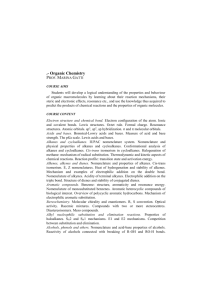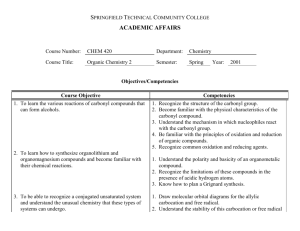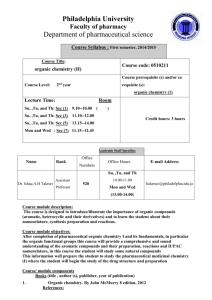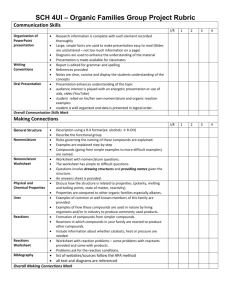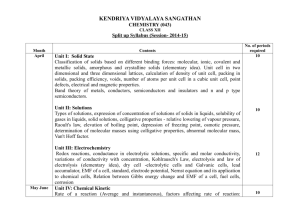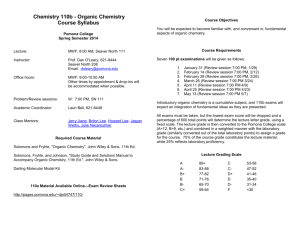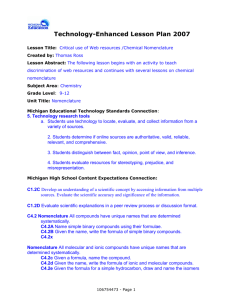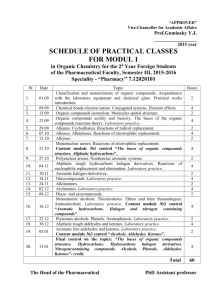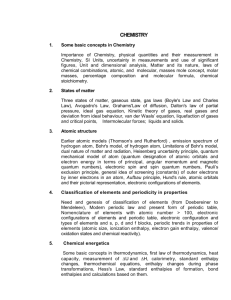Organic Chemistry
advertisement
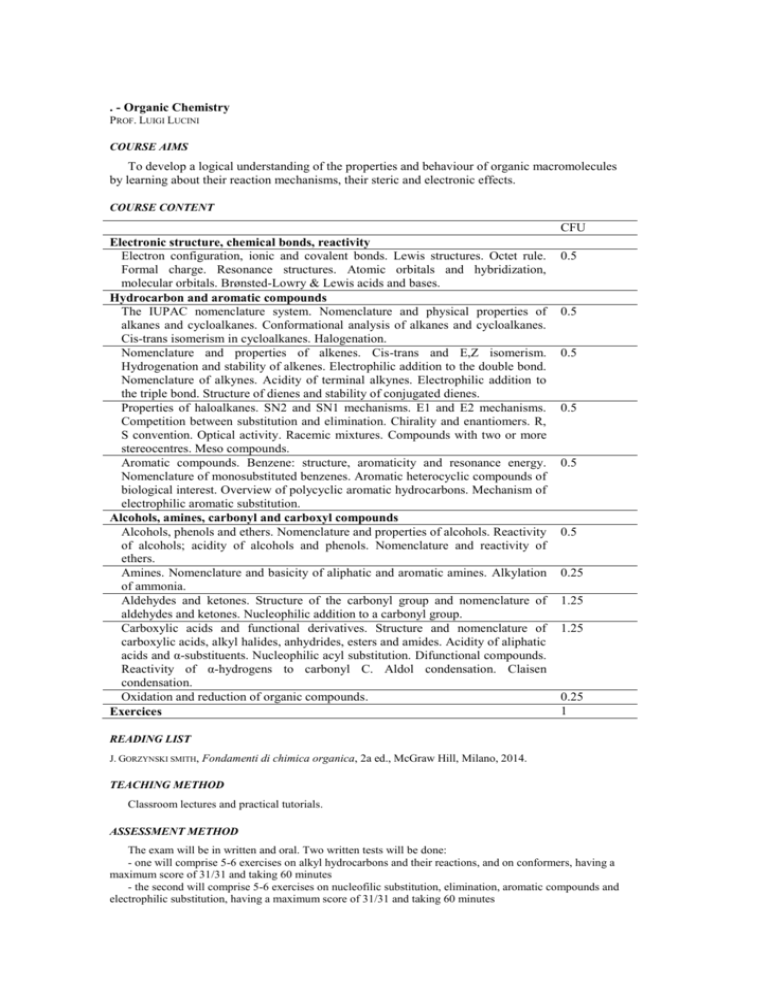
. - Organic Chemistry PROF. LUIGI LUCINI COURSE AIMS To develop a logical understanding of the properties and behaviour of organic macromolecules by learning about their reaction mechanisms, their steric and electronic effects. COURSE CONTENT CFU Electronic structure, chemical bonds, reactivity Electron configuration, ionic and covalent bonds. Lewis structures. Octet rule. Formal charge. Resonance structures. Atomic orbitals and hybridization, molecular orbitals. Brønsted-Lowry & Lewis acids and bases. Hydrocarbon and aromatic compounds The IUPAC nomenclature system. Nomenclature and physical properties of alkanes and cycloalkanes. Conformational analysis of alkanes and cycloalkanes. Cis-trans isomerism in cycloalkanes. Halogenation. Nomenclature and properties of alkenes. Cis-trans and E,Z isomerism. Hydrogenation and stability of alkenes. Electrophilic addition to the double bond. Nomenclature of alkynes. Acidity of terminal alkynes. Electrophilic addition to the triple bond. Structure of dienes and stability of conjugated dienes. Properties of haloalkanes. SN2 and SN1 mechanisms. E1 and E2 mechanisms. Competition between substitution and elimination. Chirality and enantiomers. R, S convention. Optical activity. Racemic mixtures. Compounds with two or more stereocentres. Meso compounds. Aromatic compounds. Benzene: structure, aromaticity and resonance energy. Nomenclature of monosubstituted benzenes. Aromatic heterocyclic compounds of biological interest. Overview of polycyclic aromatic hydrocarbons. Mechanism of electrophilic aromatic substitution. Alcohols, amines, carbonyl and carboxyl compounds Alcohols, phenols and ethers. Nomenclature and properties of alcohols. Reactivity of alcohols; acidity of alcohols and phenols. Nomenclature and reactivity of ethers. Amines. Nomenclature and basicity of aliphatic and aromatic amines. Alkylation of ammonia. Aldehydes and ketones. Structure of the carbonyl group and nomenclature of aldehydes and ketones. Nucleophilic addition to a carbonyl group. Carboxylic acids and functional derivatives. Structure and nomenclature of carboxylic acids, alkyl halides, anhydrides, esters and amides. Acidity of aliphatic acids and α-substituents. Nucleophilic acyl substitution. Difunctional compounds. Reactivity of α-hydrogens to carbonyl C. Aldol condensation. Claisen condensation. Oxidation and reduction of organic compounds. Exercices 0.5 0.5 0.5 0.5 0.5 0.5 0.25 1.25 1.25 0.25 1 READING LIST J. GORZYNSKI SMITH, Fondamenti di chimica organica, 2a ed., McGraw Hill, Milano, 2014. TEACHING METHOD Classroom lectures and practical tutorials. ASSESSMENT METHOD The exam will be in written and oral. Two written tests will be done: - one will comprise 5-6 exercises on alkyl hydrocarbons and their reactions, and on conformers, having a maximum score of 31/31 and taking 60 minutes - the second will comprise 5-6 exercises on nucleofilic substitution, elimination, aromatic compounds and electrophilic substitution, having a maximum score of 31/31 and taking 60 minutes In case the score in each test is positive (18/31 as minimum), then the following oral examination will not include the topics of the tests. However, it is possible to do the exam even when the written test was unsuccessful, of course preparing the whole course programme. The oral exam comprises 2-3 questions (5-6 when the tests were not positive) and will be aimed to verify the knowledge and wide comprehension of all course topics. Professor Luigi Lucini is available both before and after lectures in the teachers’ room in Cremona, or at the Institute of Environmental and Agricultural Chemistry.
